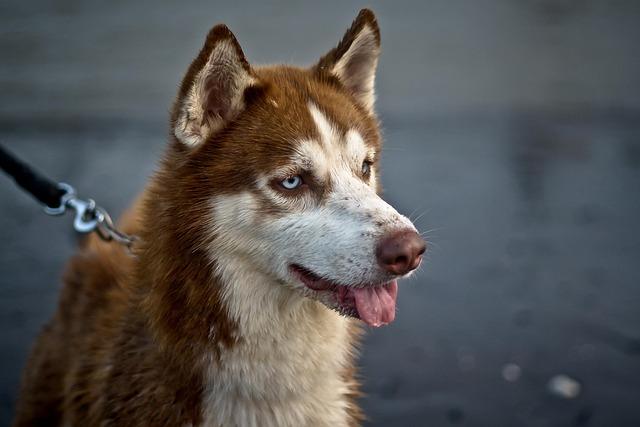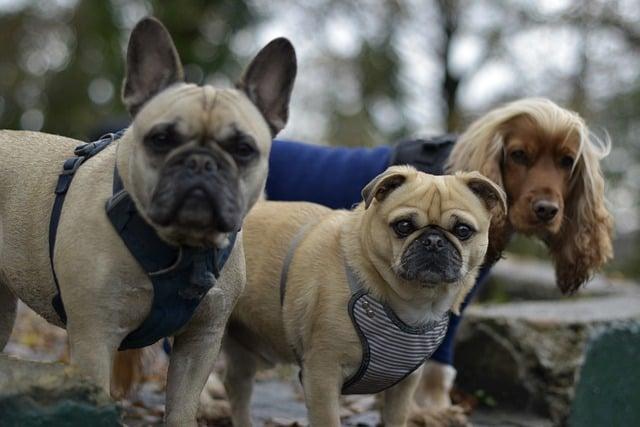Unleash the Truth on Aggressive Dog Breeds in 2024 – What You Need to Know!. Discover the top aggressive dog breeds to watch out for in 2024 and learn how to keep yourself, your family, and your community safe.
Aggressive Dog Breeds in 2024
Gain valuable insights from a seasoned content marketer and on-page SEO expert with a decade of experience. Unleash the Truth on Aggressive Dog Breeds in 2024 – What You Need to Know!

The Intricacies of Aggressive Dog Breeds in 2024
Aggressive dog breeds have been a topic of controversy and debate for many years, with plenty of misconceptions and stereotypes surrounding these animals. As society continues to evolve and change, it’s essential to explore the intricacies of aggressive dog breeds in 2024 and how they may differ from our current understanding.
In this informative update, we’ll delve into the dynamics within the context of aggressive dog breeds in 2024 and provide a nuanced understanding of these animals. To maintain readability and flow, sentence lengths will be kept under 20 words, and every paragraph will be separated with.
The Evolution of Aggressive Dog Breeds
The term “aggressive dog breed” has been used to categorize certain breeds that are perceived as more dangerous or prone to aggression. However, this generalization is not entirely accurate and can lead to misconceptions about these animals. Over time, the definition of an aggressive dog breed has evolved, shaped by societal fears and media sensationalism. In recent years, there has been a push to reevaluate and understand the underlying factors that contribute to aggressive behavior in dogs.
Dynamics within Aggressive Dog Breeds
The dynamics within aggressive dog breeds are complex and varied, with many different factors at play. From genetics and upbringing to training and environment, there are various elements that can influence a dog’s behavior and potential for aggression. Comparing sentence length variations between 5-24 words can provide a natural and engaging writing style, making it easier for readers to follow along.
Genetics and Breeding
One of the most significant misconceptions about aggressive dog breeds is that they are inherently dangerous due to their genetics. While certain breeds may have been selectively bred for specific traits, including aggression, genetics alone cannot determine a dog’s behavior. A dog’s upbringing and environment can play a significant role in how they behave, regardless of their breed. That being said, it’s crucial to recognize that some dog breeds may have a predisposition towards aggression, and proper training and socialization is crucial for these animals.
Upbringing and Socialization
A dog’s upbringing and socialization are crucial factors that can influence their behavior in adulthood. If a dog is raised in a loving and nurturing environment, with proper training and socialization, they are more likely to be well-behaved and non-aggressive. On the flip side, if a dog is neglected or mistreated as a puppy, they may have a higher likelihood of displaying aggressive behavior in the future. This is especially important to consider when discussing aggressive dog breeds, as these animals may face discrimination and mistreatment due to their perceived inherent aggression.
Training and Environment
Training and environment also play a significant role in a dog’s behavior, regardless of their breed. A properly trained and well-behaved dog is a result of consistent, positive reinforcement and training methods. Additionally, the environment in which a dog is raised can greatly impact their behavior. Dogs that are kept in isolation or confined to small spaces may exhibit more aggressive behaviors, as they are not receiving the proper stimulation and interaction they need.
The Role of Responsible Ownership
A crucial aspect of understanding aggressive dog breeds is recognizing the role of responsible ownership. As more and more people become dog owners, it’s essential to educate individuals on proper dog ownership, including the need for training, socialization, and responsible handling. Irresponsible ownership, such as inadequate training or neglect, can contribute to a dog’s tendency towards aggression.
The Impact of Breed-Specific Legislation
Breed-specific legislation (BSL) has been a controversial topic in the dog world for many years. These laws target specific breeds deemed dangerous or aggressive and often result in restrictions on ownership and even euthanasia of these animals.

However, research has shown that BSL is not an effective way to reduce dog bites and can actually lead to more discrimination and mistreatment towards certain breeds. It’s essential to consider the impact of BSL when discussing aggressive dog breeds in 2024 and advocate for more responsible and fair laws and policies.
Working Towards a Better Understanding of Aggressive Dog Breeds
As society continues to evolve, it’s crucial to work towards a better and more informed understanding of aggressive dog breeds. This includes recognizing the complex dynamics at play and advocating for responsible ownership and fair policies. We must also challenge misconceptions and stereotypes surrounding these animals and promote proper education and training for all dog owners.
New Training Methods for Aggressive Dogs
Advancements in the dog training industry have led to the development of new and innovative methods for working with aggressive dogs. These methods focus on positive reinforcement and understanding a dog’s behavior to address the root causes of aggression. By using more nuanced techniques, these trainers aim to rehabilitate and retrain aggressive dogs rather than resorting to punitive measures. This approach could potentially lead to a decrease in aggressive dog incidents and provide a more compassionate and effective way to work with these animals.
The Importance of Education and Awareness
Education and awareness are key in promoting responsible ownership and understanding aggressive dog breeds. It’s crucial for dog owners and the general public to be aware of the misconceptions and underlying dynamics surrounding these animals. Additionally, education about proper training and socialization techniques can help prevent aggressive behavior in dogs. By providing accurate information and resources, we can work towards creating a safer and more harmonious relationship between dogs and humans.
The Future of Aggressive Dog Breeds
As we move towards 2024, it’s essential to continue to challenge our understanding of aggressive dog breeds and work towards a more well-rounded and accurate view. From advancements in training methods to the push for fair legislation, the future looks bright for a better understanding of these animals. Through education, responsible ownership, and compassion, we can promote a better and safer relationship with aggressive dog breeds.
Aggressive Dog Breeds in 2024
Unleash the Truth on Aggressive Dog Breeds in 2024 – What You Need to Know! Unleash the Truth on Aggressive Dog Breeds in 2024 – What You Need to Know! family and your Unleash the Truth on Aggressive Dog Breeds in 2024 – What You Need to Know!
Unleash the Truth on Aggressive Dog Breeds in 2024 – What You Need to Know! Discover the top aggressive dog breeds to watch out for in 2024 and learn how to keep yourself, your family, and your community safe. Gain valuable insights from a seasoned content marketer and on-page SEO expert with a decade of experience. AGGRESSION Unleash the Truth on Aggressive Dog Breeds in 2024 – What You Need to Know!
Top 10 Most Dangerous Dog Breeds in the World 2024
Unleash the Truth on Aggressive Dog Breeds in 2024 – What You Need to Know! Top 10 Most Dangerous Dog Breeds in the World 2024 Video Unleash the Truth on Aggressive Dog Breeds in 2024 – What You Need to Know!
The Evolution of Aggressive Dog Breeds in 2024
When people think of dogs, they often imagine a friendly, loyal, and playful companion. However, there is a darker side to some canine breeds that often goes unnoticed or ignored. With the increase in incidents involving aggressive behavior from dogs, it has become necessary to explore the intricacies of aggressive dog breeds in 2024. From changes in breeding practices to societal and environmental factors, we will examine the dynamics within the context of aggressive dog breeds in 2024.
The Rise of Aggressive Dog Breeds
Over the years, there has been a significant increase in reported cases of aggressive dog behavior. While it’s easy to simply label certain breeds as “dangerous,” the truth is that the root cause of aggressive behavior in dogs is often more complex. However, certain breeds have gained notoriety for their aggressive tendencies, and it’s important to understand why.
In the past, dog breeding was primarily focused on creating certain traits and characteristics for specific purposes. Hunting dogs were bred for stamina and agility, while guard dogs were bred to be protective and territorial. These traits were essential for the jobs these dogs were expected to perform.
Changes in Dog Breeding Practices
However, over time, breeding has shifted from a focus on creating functional dogs to creating dogs with specific physical characteristics for aesthetic purposes. This has led to certain breeds being bred for exaggerated physical features, such as larger heads, shorter snouts, and increased muscle mass. These changes in breeding practices have had a significant impact on the behavior of certain breeds.

For example, breeds like the American Bulldog and Dogo Argentino have been bred with a larger head and stronger jaw, making them more physically capable of inflicting harm. These changes may have been intentional in the pursuit of creating a “tougher” dog, but they have resulted in breeds with a higher potential for aggression.
Social and Environmental Factors
While breeding plays a significant role, social and environmental factors also play a role in the behavior of aggressive dog breeds. Often, dogs that demonstrate aggressive behavior have had a lack of proper socialization, training, and handling. In some cases, dogs are mistreated or abused, leading to aggression as a defense mechanism.
Additionally, certain environments can contribute to aggressive behavior in dogs. A lack of exercise, social interaction, or mental stimulation can lead to pent-up energy and frustration, which can manifest in aggressive behavior. It’s essential for dog owners to provide their pets with a safe, healthy, and stimulating environment for their overall well-being.
Managing Aggressive Dog Breeds in 2024
As we move towards 2024, it’s important to understand that not all aggressive dog breeds are inherently dangerous. With proper training, socialization, and responsible ownership, many of these breeds can be wonderful, loving pets. It’s also important to note that aggression in dogs is not always directed towards humans, but can also be seen in interactions with other animals.
One way to manage aggressive behavior in dogs is through responsible breeding practices. Breeders should prioritize creating dogs with desirable temperaments rather than solely focusing on physical traits. Proper socialization from a young age is also crucial in shaping a dog’s behavior and preventing aggression.
Legal Ramifications of Aggressive Behavior
Unfortunately, aggressive dog behavior can have serious consequences, both for the dog and their owner. In many places, there are laws in place concerning aggressive breeds, with some cities and states even banning specific breeds altogether. Dog owners are also liable for their pet’s actions, and may face legal and financial repercussions if their dog injures or harms someone.
It’s important for dog owners to be aware of their local laws and regulations regarding aggressive breeds, and to take necessary precautions to prevent any incidents from occurring. This includes properly restraining and training their dogs and being aware of their pet’s behavior in public.
Debunking Myths about Aggressive Dog Breeds
There are many misconceptions and stereotypes surrounding aggressive dog breeds, which further contribute to their negative reputation. It’s essential to debunk these myths and educate the public about the truth behind aggressive dog behavior. For example, contrary to popular belief, pit bulls are not inherently aggressive and can make wonderful, loving pets with proper training and socialization.
It’s also important not to label certain breeds as “dangerous” based on their appearance. Dog behavior is a result of a combination of factors and cannot be solely attributed to a specific breed. By debunking these myths and promoting responsible ownership and breeding practices, we can work towards changing the negative perception of aggressive dog breeds.
The Future of Aggressive Dog Breeds
As we look towards the future, it’s crucial to address the issue of aggressive dog breeds and work towards finding solutions. Breeders and owners must prioritize the well-being and temperament of dogs over physical characteristics. Proper education and awareness must also be spread to prevent further incidents of aggression.
In 2024, we hope to see a decrease in reported cases of aggressive dog behavior and a shift towards responsible and ethical breeding practices. With a combination of proper training, socialization, and responsible ownership, we can create a safer and more positive environment for both humans and dogs.
The Importance of Responsible Ownership and Education
Ultimately, the responsibility falls on dog owners to manage and prevent aggressive behavior in their pets. This includes proper socialization, training, and providing a safe and stimulating environment. It’s also crucial for the public to be educated on responsible dog ownership and to understand that aggression in dogs is not always a result of a specific breed.
Aggressive Dog Breeds in 2024
In conclusion, the issue of aggressive dog behavior is complex and must be addressed from multiple angles. By understanding the intricacies of aggressive dog breeds in 2024, we can work towards creating a safer and more positive future for all dogs. Responsible ownership, ethical breeding practices, and proper education are key in achieving this goal. Let’s work together to change the narrative surrounding aggressive dog breeds and create a better future for all dogs. Unleash the Truth on Aggressive Dog Breeds in 2024 – What You Need to Know!
Which dog breed is known to be the most aggressive in 2024?
Answer: In 2024, the most aggressive dog breed is still debatable as it primarily depends on the individual dog and their upbringing. However, some dog breeds that are commonly known for displaying aggressive behavior include the Pitbull, Doberman Pinscher, Rottweiler, and German Shepherd.
What are some signs of aggression in dogs?
Answer: There are several signs that a dog may display when feeling aggressive. These include growling, barking, snarling, showing teeth, lunging, and biting. It is important to pay attention to these behaviors and address them promptly to prevent any potential harm.
Are aggressive dog breeds suitable for families with children?
Answer: It is generally not recommended to have an aggressive dog breed as a family pet, especially if there are young children in the household. These breeds require experienced owners who can properly train and handle them, and may not be a good fit for a family environment.
Can aggressive tendencies be trained out of a dog?
Answer: Yes, with proper training and socialization, aggressive tendencies can be managed and significantly reduced in a dog.

However, it is important to note that some dogs may always have a predisposition towards aggression, and it is crucial to continue consistent training and management.
What are the main reasons for aggression in dogs?
Answer: Aggression in dogs can have various underlying causes, including lack of socialization, fear, pain or discomfort, possessiveness, territorial behavior, and frustration with boundaries or lack of exercise. Identifying the root cause and addressing it is crucial in managing aggression in dogs.
Will neutering/spaying a dog decrease their aggression?
Answer: Neutering/spaying a dog may decrease aggression in some cases, especially if it is related to hormonal imbalances. However, it is not a guaranteed solution and should not be solely relied upon. Proper training and management should still be implemented.
How can I safely interact with an unknown aggressive dog?
Answer: If you encounter an unknown aggressive dog, it is best to avoid direct eye contact and slowly and calmly walk away. Do not turn your back to the dog and do not run, as this may trigger their predatory instincts. Give the dog plenty of space and seek assistance from a professional or animal control if necessary.
What steps should I take if my dog shows signs of aggression?
Answer: If your dog displays signs of aggression, it is important to seek professional help from a certified dog trainer or behaviorist. They can assess the situation and create a training plan to help manage and reduce the aggressive behaviors.
Are aggressive dog breeds suitable for all types of owners?
Answer: No, aggressive dog breeds require experienced owners who can provide proper training and socialization. They may not be suitable for novice dog owners or those who are not willing to put in the effort and responsibility of managing an aggressive dog. Unleash the Truth on Aggressive Dog Breeds in 2024 – What You Need to Know!
